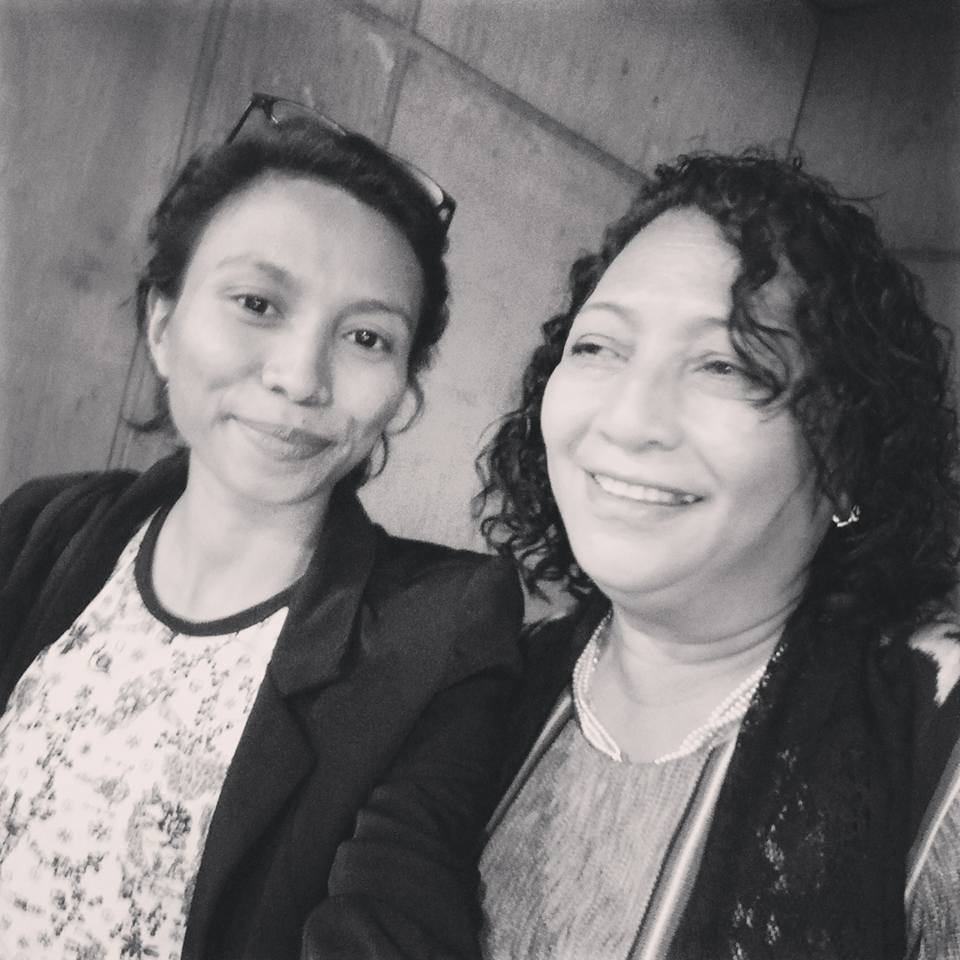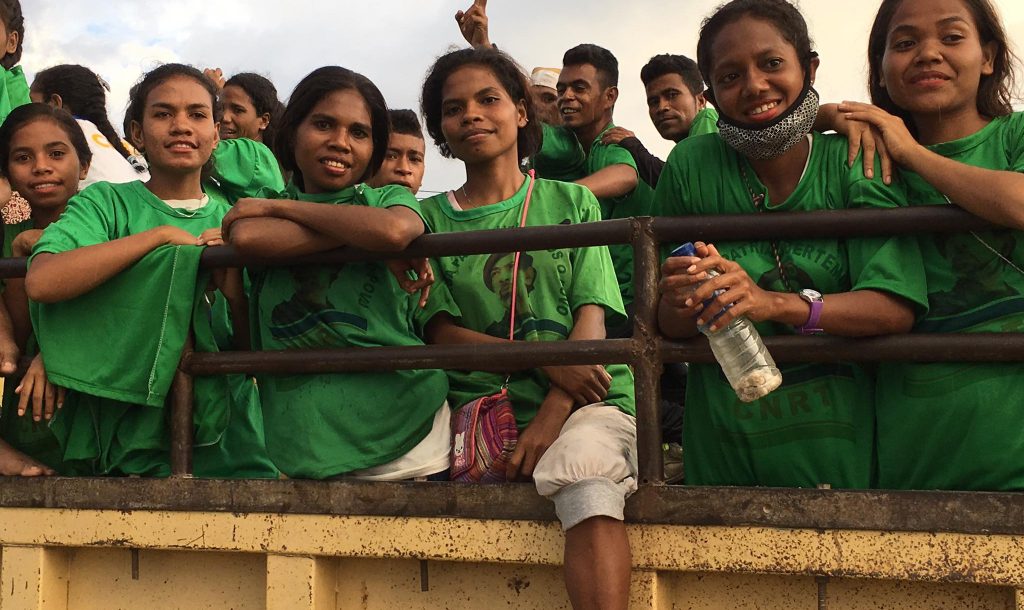Approximately 700,000 men and women will go to the ballot box in Timor-Leste (East Timor) on Saturday 22 July to cast their vote for one of the 21 parties contesting 65 parliamentary seats. East Timor already has an impressive 38% female representation in parliament, thanks to a robust quota system. This is the highest percentage of women representatives in the Asia-Pacific, and indeed one of the highest in the world.
In East Timor’s proportional representation (PR) system, voters choose a political party rather than a local candidate. Each party submits a list of 65 candidates in preferential order and every third candidate on the list must be a woman. For this and other reasons the Economist’s 2016 Democracy Index ranked the country as the most democratic in Southeast Asia.
But a culture of men’s public leadership and political patronage toward women results in men’s voices and faces being at the forefront of all the campaigning currently being conducted by parties these past weeks, with little to no focus on women candidates.
Victories for women’s formal political participation as seen in Timor’s parliament are not won easily. East Timorese women activists strategically seized the opportunity to ensure these positive discrimination strategies during the establishment of the new democratic state after 1999. The women’s network Rede Feto advocated for equal rights for men and women to be enshrined in the constitution, and for a 30% quota in the parliament—and won both. The quota was mandated in the 2007 National Election Law, but was amended in 2011 to the one woman in every three candidates rule that now operates.
In 2010, female parliamentarians, along with the wider women’s movement, were able to ensure the introduction of the Lei Contra Violencia Domestica (Law Against Domestic Violence), which is very progressive in its provisions. In the 2012 election, 25 women won seats, and Parliament recently oversaw the updated National Action Plan on Gender Based Violence and its budget. The reverberations throughout government of policies to support these changes are still being felt, as are responses among civil society.
These are strategic victories for the women’s movement. But at the grassroots level, it’s not such a positive picture.
At the suco (local village) level, women are much less represented. Yet here too a new East Timorese law is making a difference. In local elections for Chefe Suco (village head) there must be a minimum of two candidates, one of whom must be a woman. The 2016 “100% Hau Prontu” (“I can”) campaign, carried out by an alliance of government partners, civil society organisations such as the Alola Foundation, and international agencies such as UN Women, identified women leaders and prepared 319 of them to stand for election. In 2004 only 1.6% of local leaders were women; in 2009, there were 2.4%; and 4.7% in 2016, when 21 women were elected as local leaders.
While acknowledging the huge wins for women in Parliament, women’s activists have also noted that many women parliamentarians are often ineffective, and viewed merely as token representatives forced on the Timorese by the quota system. The closed list PR system gives political party leaders substantial power—not only to place themselves high on lists but also as political patrons to place their trusted followers high on the lists as well.
Women candidates are selected by male leaders and in this way are caught in the sway of male dominated politics. Some women’s groups in the wider society are aligned to political parties, illustrating how the women’s movement is still significantly shaped and effected by male-dominated politics. Even Xanana Gusmao, the most powerful of Timorese political leaders, admitted in 2014 that much more needs to be done to ensure that women can take on a “full role” in parliament. The women’s cross-party caucus (Grupo de Mulheres Parlamentares de Timor-Leste, GMPTL), attached to the Parliament and funded by UN Women, is working on these issues.
Women leaders in East Timor can remain beholden to their male political patrons, and some notable fallen female political leaders such as Lucia Lobato, “Micato” Fernandes Alves, and Emilia Pires are examples of what can happen to women operating in such an aggressively competitive political system. The dominance of a militarised masculinity in political culture persists in Timor—not surprising after a long period of military conflict.

Different generations of female leaders of the women’s movement: Berta Antonieta Tilman Pereira, founder of a new feminist network in Timor, with Maria ‘Micato’ Domingas Fernandes Alves, one of Timor’s most senior leaders, speaking together at the Timor-Leste Studies Association Conference, Dili July 2017 (Photo: author)
The highly competitive politics that results is a more subtle form of militarism. Men’s familiarity with operating in such an environment establishes their political privilege and advantage. In Timor this system is reproduced by the elite leadership of military veterans of the war with Indonesia, the so-called “generation of 1975” who, although aging, remain undeniably powerful. The diplomatic leader Jose Ramos Horta recently described it as “a fundamentally patriarchal culture in which the oldest represents experience and wisdom.” In the past, conflicts between these elite male leaders has led to violence and civil unrest.
But these times may now be over. In Parliament last year, then President and former military commander Taur Matan Ruak (now head of political opposition party PLP) compared Xanana Gusmao to the Indonesian dictator Suharto and accused the leaders of the main political parties, CNRT and Fretilin, of corruption and nepotism. While this was not welcomed, and caused a certain amount of unease, violence did not ensue. This week in Dili the next generation of political leaders verbally sparred about real policy issues in a televised debate facilitated by Horta. Sadly, no women representatives were included, nor have many been seen addressing the crowds on the campaign trail.
Timorese women have succeeded in being included in today’s national parliament in significant numbers, and this will continue. This quantitative victory has not yet translated into a more qualitative one, however. The struggle for women’s rights to be equal partners in national decision making continues with no sign of halting. Many of the 25 current female members of parliament will be going to polls again with more experience and self-assurance. The next generation of well-educated, confident women have higher expectations for their lives and a different relationship to their male peers.
The acceptance of gender equality as a general principle in Timor-Leste is well documented, although the deeper social change required for men and women to have equal opportunities in their everyday lives remains limited. The legal regime is in place, and Timor Leste’s extremely youthful population represents a great opportunity for positive change and renewal.
……………………
Sara Niner is a Lecturer in Anthropology at Monash University. She first visited East Timor as a backpacker in August 1991, during the Indonesian occupation, and afterwards joined the solidarity movement for East Timorese self-determination in Melbourne.
Her biography, Xanana: Leader of the Struggle for Independent Timor-Leste, was published in both English (2009) and Portuguese (2011). Her new book Women and the politics of Gender in Post-Conflict Timor-Leste was published by Routledge.
Header image: women at a CNRT party rally on 18 July 2017, taken by Ed Aspinall.
 Facebook
Facebook  Twitter
Twitter  Soundcloud
Soundcloud  Youtube
Youtube  Rss
Rss 